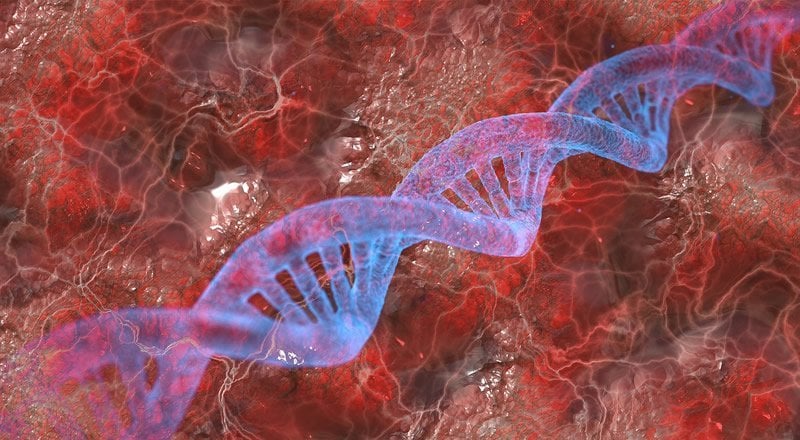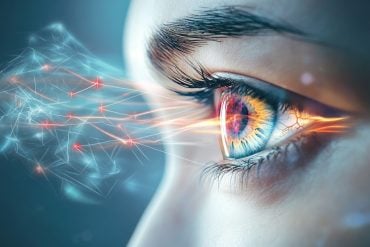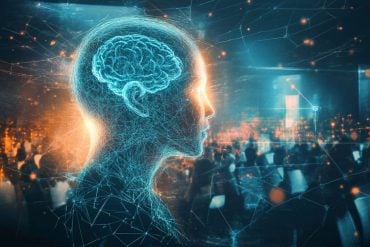Summary: Genomic autism-related ADNP mutations were found in postmortem olfactory bulbs and hippocampi of Alzheimer’s patients.
Source: AFTAU
Researchers believe that autism is caused by mutations that occur sporadically in the egg or sperm or during pregnancy. Activity-dependent neuroprotective protein (ADNP) is a dominant gene whose de novo (during pregnancy) mutations are known to cause autism-related intellectual disabilities. A new Tel Aviv University study has found that ADNP mutations continue to occur in old age and accumulate in the brains of Alzheimer’s disease patients.
The study was led by Prof. Illana Gozes and conducted by her PhD students Yanina Ivashko-Pachima and Adva Hadar, in collaboration with Iris Grigg, Oxana Kapitansky and Gidon Karmon. Hadar was co-supervised by co-author Prof. David Gurwitz of TAU’s Sackler Faculty of Medicine. Collaborating laboratories included those of Vlasta Korenková (BIOCEV, Czech Republic), Michael Gershovits (Weizmann Institute of Science), C. Laura Sayas (Universidad de La Laguna, Tenerife, Spain), R. Frank Kooy (University of Antwerp, Belgium) and Johannes Attems (Newcastle University, UK). It was published on October 30 in Molecular Psychiatry.
Prof. Gozes is the first incumbent of the Lily and Avraham Gildor Chair for the Investigation of Growth Factors, head of the Elton Laboratory for Molecular Neuroendocrinology at TAU’s Department of Human and Molecular Genetics, Sackler Faculty of Medicine and a member of TAU’s Adams Super Center for Brain Studies and the Sagol School of Neuroscience.
“We discovered thousands of mutations in aging human brains, especially in the individual Alzheimer’s brains,” explains Prof. Gozes. “We were surprised to find a significant overlap in Alzheimer’s genes undergoing mutations with genes that impact autism, intellectual disability and mechanisms associated with the cell skeleton/transport system health. Importantly, the cell skeleton/transport system includes the protein Tau, one of the major proteins affected in Alzheimer’s disease, which form the toxic neurofibrillary tangles.”
The protein ADNP was first discovered in Prof. Gozes’s laboratory at TAU 20 years ago. Postmortem studies have indicated that it undergoes mutations in the aging Alzheimer’s brain.
“Brain changes associated with Alzheimer’s disease may begin 20 or more years before any symptoms appear,” adds Prof. Gozes. “As neuronal damage increases, the brain can no longer compensate for the changes, and individuals show cognitive decline. Currently, the diagnosis of Alzheimer’s occurs when the brain damage of individual patients is already widespread, so that current drugs can at most offer symptomatic relief. But they provide no cure.”
In their new study, Prof. Gozes and her group propose a paradigm-shifting concept in the understanding of Alzheimer’s disease. According to the research, accumulating mosaic somatic mutations — uninherited genetic alterations passed on during cell division — promote brain pathology. This could provide an avenue toward developing new diagnostic measures and therapies.

Through a complete sequencing of protein encoding DNA (a technique called RNA-sequencing) and further bioinformatics analysis, the team identified thousands of mutations in the aging Alzheimer’s brain. Further sophisticated cell cultures and live cell imaging technologies allowed for the identification of protective molecules that could serve as potential drug candidates.
“We found in cell cultures that the ADNP-derived snippet, the drug candidate NAP, inhibited mutated-ADNP toxicity and enhanced the healthy function of Tau, a key brain protein involved in Alzheimer’s disease and other brain diseases,” says Prof. Gozes. “We hope that new diagnostics and treatment modes will be developed based on our discoveries.”
Funding: The study was partially supported by the Israel Science Foundation, AMN Foundation, ERA-NET Neuron, Alicia Koplowitz Foundation, Spanish Friends of Tel Aviv University, Anne and Alex Cohen, Canadian Friends of Tel Aviv University, and Drs. Ronith and Armand Stemmer, French Friends of Tel Aviv University. Additional support included UK, Czech, Spanish and EU grants to the international collaborators.
The use of ADNP and related mutations for Alzheimer’s diagnosis and for ADNP-related peptide/peptide mimetics AD/ASD treatment is under patent protection (I. Gozes, A. Hadar, Y. Ivashko-Pachima). Prof. Gozes also serves as the chief scientific officer of Coronis Neurosciences, a company developing NAP (CP201) for the treatment of ADNP syndrome, the autism spectrum disorder.
Source:
AFTAU
Media Contacts:
George Hunka – AFTAU
Image Source:
The image is in the public domain.
Original Research: Open access
“Discovery of autism/intellectual disability somatic mutations in Alzheimer’s brains: mutated ADNP cytoskeletal impairments and repair as a case study”. Yanina Ivashko-Pachima, Adva Hadar, Iris Grigg, Vlasta Korenková, Oxana Kapitansky, Gidon Karmon, Michael Gershovits, C. Laura Sayas, R. Frank Kooy, Johannes Attems, David Gurwitz & Illana Gozes.
Molecular Psychiatry doi:10.1038/s41380-019-0563-5.
Abstract
Discovery of autism/intellectual disability somatic mutations in Alzheimer’s brains: mutated ADNP cytoskeletal impairments and repair as a case study
With Alzheimer’s disease (AD) exhibiting reduced ability of neural stem cell renewal, we hypothesized that de novo mutations controlling embryonic development, in the form of brain somatic mutations instigate the disease. A leading gene presenting heterozygous dominant de novo autism-intellectual disabilities (ID) causing mutations is activity-dependent neuroprotective protein (ADNP), with intact ADNP protecting against AD-tauopathy. We discovered a genomic autism ADNP mutation (c.2188C>T) in postmortem AD olfactory bulbs and hippocampi. RNA-Seq of olfactory bulbs also identified a novel ADNP hotspot mutation, c.2187_2188insA. Altogether, 665 mutations in 596 genes with 441 mutations in AD patients (389 genes, 38% AD—exclusive mutations) and 104 genes presenting disease-causing mutations (OMIM) were discovered. OMIM AD mutated genes converged on cytoskeletal mechanisms, autism and ID causing mutations (about 40% each). The number and average frequencies of AD-related mutations per subject were higher in AD subjects compared to controls. RNA-seq datamining (hippocampus, dorsolateral prefrontal cortex, fusiform gyrus and superior frontal gyrus—583 subjects) yielded similar results. Overlapping all tested brain areas identified unique and shared mutations, with ADNP singled out as a gene associated with autism/ID/AD and presenting several unique aging/AD mutations. The large fusiform gyrus library (117 subjects) with high sequencing coverage correlated the c.2187_2188insA ADNP mutation frequency to Braak stage (tauopathy) and showed more ADNP mutations in AD specimens. In cell cultures, the ADNP-derived snippet NAP inhibited mutated-ADNP-microtubule (MT) toxicity and enhanced Tau–MT association. We propose a paradigm-shifting concept in the perception of AD whereby accumulating mosaic somatic mutations promote brain pathology.







